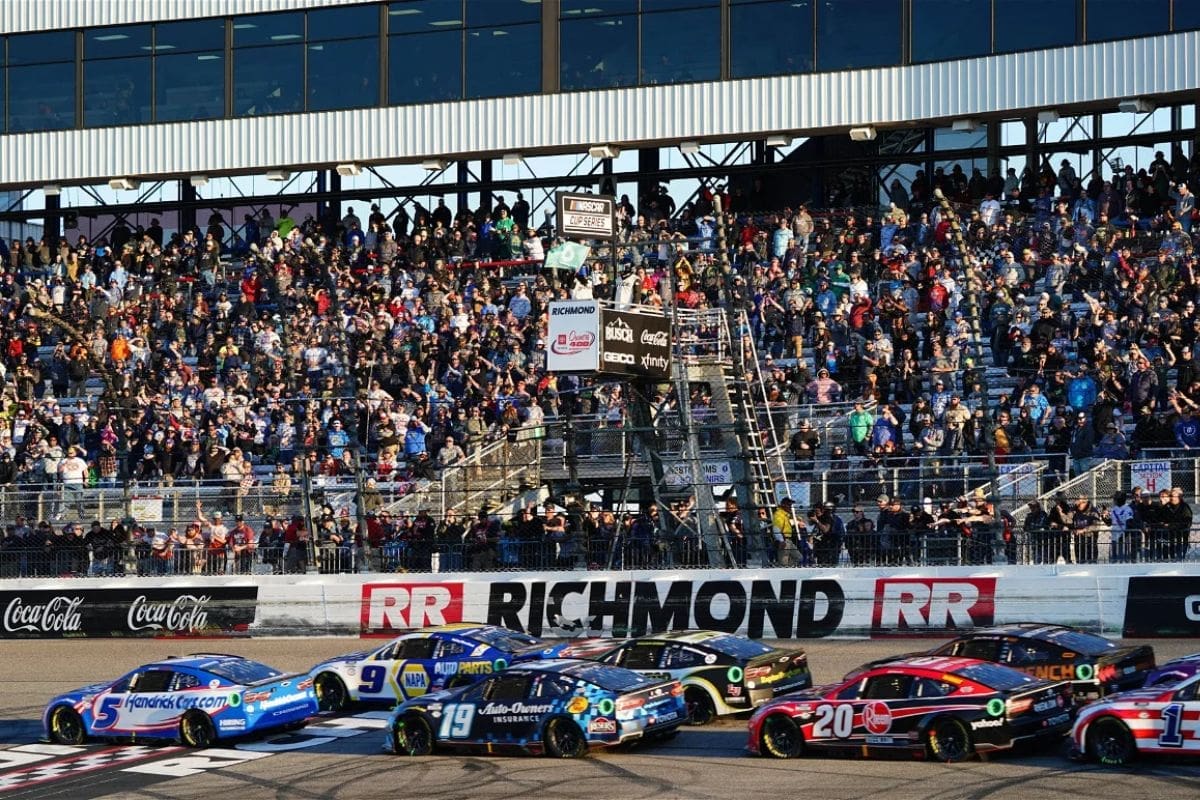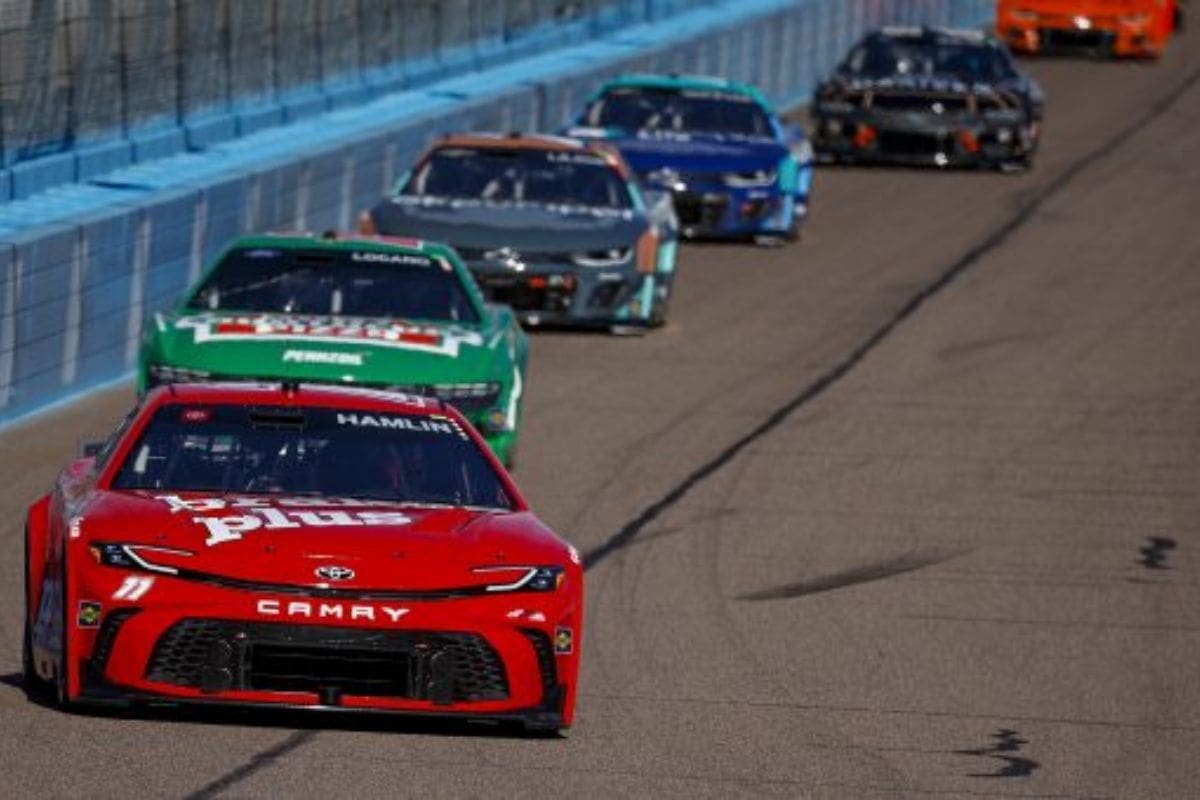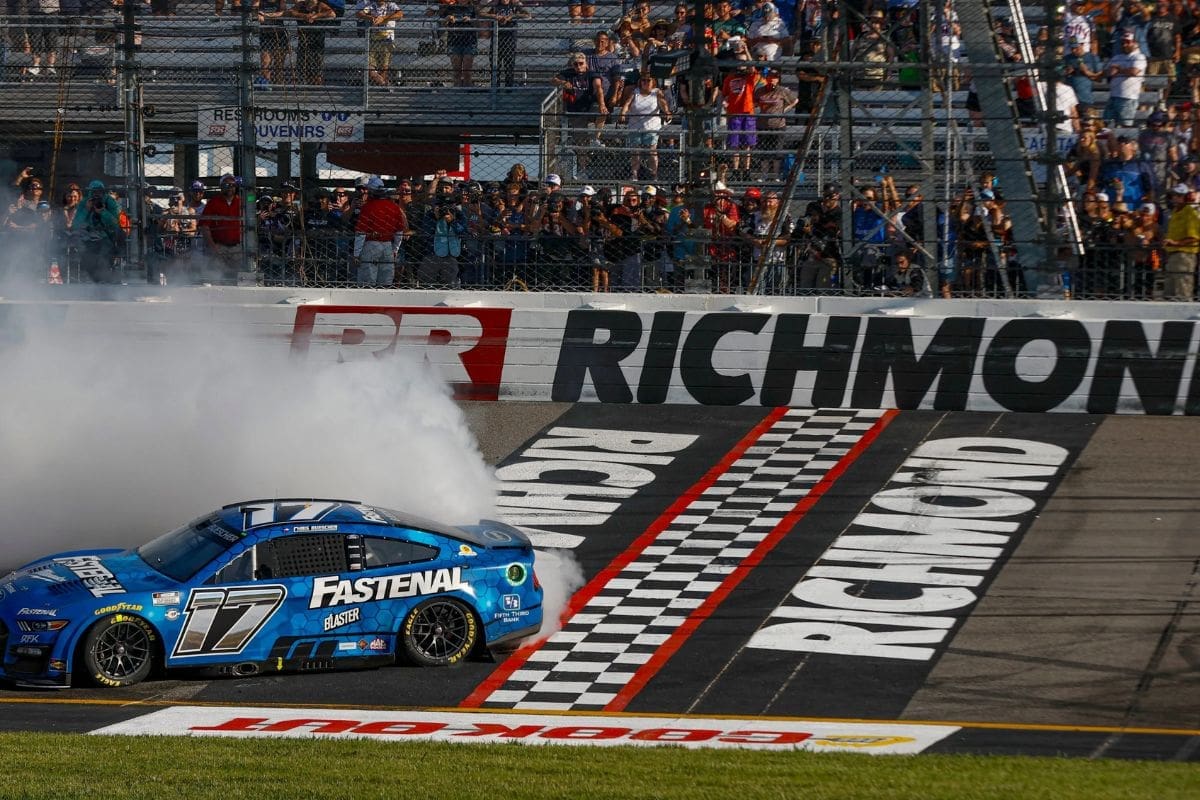Toyota Dominates Short Track Package: Toyota’s dominance at Phoenix, showed by Christopher Bell’s victory and the presence of five Toyotas among the top eleven, signals a competitive edge with the new short track package. Their success, built on a strong partnership and a cohesive strategy, showcases an incredible adaptation to technical changes, outpacing rivals like Chevrolet and Ford. This mastery extends beyond driver skill, hinting at Toyota’s deep understanding of handling improvements and tire management essential for short track victories. As Toyota sets its sights on Richmond, the emphasis shifts to precision driving and strategic pit stops, suggesting the stakes are high for their continued supremacy in NASCAR’s evolving landscape. This trajectory indicates intriguing developments for Toyota and its competitors in upcoming races.
Key Takeaways
- Toyota showcased mastery of the new short track package, with Christopher Bell securing victory and five Toyota cars finishing in the top 11 at Phoenix.
- The new setup’s handling improvements and enhanced stability have given Toyota a competitive edge over Chevrolet and Ford.
- Toyota’s success at Phoenix sets a high benchmark and challenges competitors to adapt and innovate for future races.
- With a strong start, Toyota eyes Richmond Raceway, historically a track with conditions favoring Hendrick Motorsports, aiming for continued dominance.
- The team’s focus on tire management, precision driving, and strategic pit stops will be crucial for success at the upcoming Richmond night race.
Toyota Dominates in Phoenix
In a masterful display of technical prowess and strategic racing, Toyota’s dominance at the Phoenix race was unmistakably highlighted as Christopher Bell secured victory, with the team’s collective performance propelling five of its cars into the top 11 positions, showcasing the efficacy of their newly implemented short track packages. This impressive showing was not merely a reflection of the individual skill of the drivers but showed the strong partnership and cohesive strategy Toyota has cultivated. Their dominant performance, with Bell and Ty Gibbs leading a combined 107 laps, illustrated a competitive edge that left Chevrolet and Ford trailing.
The success at Phoenix can be attributed to Toyota’s adept race strategy and the seamless integration of their short track packages across the team’s lineup. This strategic decision showed the manufacturer’s commitment to innovation and adaptation, elements essential to staying ahead in the fiercely competitive environment of motorsports. Toyota’s ability to consistently leverage these strengths positions them as formidable contenders, not just in the context of a single race but as a dominant force in the broader racing season. Their performance in Phoenix serves as a compelling indicator of Toyota’s potential to replicate this success in future races, solidifying their status at the pinnacle of motorsports excellence.

New Short Track Package Shakes Things Up
Building on their recent success, Toyota’s adept adaptation to NASCAR’s newly introduced short track package at Phoenix showed a significant development in the competitive dynamics of the sport. This shift has not only altered the landscape of competition but also highlighted several critical factors affecting the race outcome:
- Toyota’s Advantage: Toyota’s swift mastery over the new package set them apart, showcasing their ability to leverage team strategy and driver performance effectively.
- Ford’s Struggle: In contrast, Ford faced noticeable challenges, with Todd Gilliland emerging as their lone beacon amidst the struggle. This disparity points towards a need for strategic reassessment to regain competitive ground.
- Fan Reactions: The introduction of the new package and its resultant shift in race dynamics elicited mixed reactions from fans. While some applauded the increased competitiveness and unpredictability, others expressed concerns over the apparent imbalance between teams.
Chevy came into the race riding high on a three-win streak to start the season, but their performance at Phoenix left much to be desired. Apart from Ross Chastain sneaking into the top 10, they barely made a peep. However, despite the potential of drivers like Kyle Larson and Joey Logano, who have previously excelled on similar tracks, the challenges faced by Ford and Chevy in Phoenix cannot be ignored.
In contrast, it was a Toyota showcase at the front, with the Japanese manufacturer leading the charge for almost the entire race. Apart from a brief 14-lap interruption, it was all Toyota, all the way, displaying their dominance on the track.
Toyota’s Strong Start with the New Setup
Despite a sluggish beginning to the season, Toyota’s remarkable turnaround with the new short track package at Phoenix has positioned them as formidable contenders, according to Lee Spencer from GoPRNLive. The swift adaptation and mastery of Toyota’s racing strategy have not only highlighted their short track success but have also underlined the championship potential brewing within their ranks.
The Joe Gibbs Racing team, in particular, has showcased an impressive level of driver dominance. This has been a proof of Toyota’s performance engineering and their ability to pivot and harness the strengths of their new setup effectively. The synergy between driver skill and vehicle capability is propelling Toyota to the forefront of the competition.
Their deep understanding of the variations of racing strategy, combined with the sheer talent of their drivers, is setting a new benchmark for success. Toyota’s resurgence is not just a return to form but a bold statement of their championship potential.
“the fact that um they were dominant with the new short track package at Phoenix, I would not discount the Toyota’s chances this weekend whether or not the race is named on their behalf. But uh I think that any of those four Joe Gibbs Racing drivers would have to be in my top picks to win the race.” – (Lee Spencer)
Changes in the Short Track Package
Reflecting on Toyota’s recent triumphs, attention now turns to the innovative changes implemented in the short track package, prominently introduced at Phoenix, which have remarkably influenced the dynamics of NASCAR racing. The adjustments aimed at balancing performance and competition have showed Toyota’s advantage on the circuit, particularly focusing on:
- Handling Improvements: By adjusting the front downforce and increasing the rear spoiler, drivers experience enhanced stability and control around tight corners, a critical factor in short track success.
- Driver Feedback: Positive remarks from competitors like Ford’s Chase Briscoe highlight the package’s impact, though it’s not without its challenges. Driver feedback has been pivotal in fine-tuning the setup, with particular attention to how the car responds to the newly introduced tire by Goodyear.
- Tire Performance and Wear: The introduction of a new tire designed to complement the aerodynamic changes has been a double-edged sword. While it aims to offer better grip and performance gains, concerns regarding tire wear persist, signaling an area for potential improvement.
While many drivers weren’t overly concerned about tire wear, their focus remained on how their cars were handling. Christopher Bell, however, appeared unfazed, showcasing his talent with a remarkable surge of 17 positions in just 34 laps towards the race’s conclusion. For the Chevy contingent, particularly those at Hendrick Motorsports, cooler temperatures could prove to be a game-changer. Historically, they’ve demonstrated a knack for elevating their performance when the mercury drops, hinting at a potential advantage as the season progresses.
This strategic upgrade in the short track package shows Toyota’s commitment to leveraging technical advancements for performance gains, while also addressing the nuanced balance between tire wear and handling improvements based on driver feedback.
Looking Ahead to Richmond
With the Richmond Raceway night race on the horizon, teams are meticulously preparing to navigate the challenges presented by the track’s distinctive conditions. Alex Bowman reported that these conditions have played to the strengths of Hendrick Motorsports due to cooler temperatures favoring their setup. The Richmond setup demands a fine balance between aggression and conservation, particularly in tire management, which becomes critical under the night sky. The cooler track conditions at night notably affect tire wear and grip, requiring teams to adopt strategies that optimize tire performance throughout the race’s duration.
William Byron has emerged as a force to be reckoned with under the lights since the Next Gen car hit the track, boasting an impressive three wins in night races. Over his last half-dozen nighttime outings, the #24 machine has not only secured two victories but has also never faltered outside the top nine.

But it’s not just Byron who thrives when the sun sets. The entire Hendrick Motorsports squad seems to come alive under the stars, leading the charge with a total of five wins in the Next Gen era’s night races. Alongside Byron’s three victories, Chase Elliott and Kyle Larson have each notched a win of their own under the cover of darkness.
Rudy Fugle, Byron’s crew chief, echoed sentiments similar to those expressed by Alex Bowman in his recent interview regarding Richmond’s night race, further emphasizing the team’s confidence and readiness to shine when the lights are on.
“We haven’t raced the Next Gen there at the night time at all. Here’s not usually a ton of side-by-side racing, but there are a lot of comers and goers that turn into pit strategy options on what is going to work better. […] With a night race and cool temperatures, that may give us a chance of seeing more side-by-side racing. We may see more of why this place used to be called the ‘Actic Track.” – (Fugle)
News in Brief
Toyota’s dominance in Phoenix, facilitated by the introduction of a new short track package, underscores the manufacturer’s adaptability and strategic prowess in NASCAR’s competitive landscape.
The adjustments made to the short track setup not only demonstrate Toyota’s engineering capabilities but also set an example for future races, particularly at Richmond.
This scenario shows the pivotal role of innovation and adaptation in maintaining competitive advantage within motorsports, highlighting Toyota’s potential to sustain its dominance in forthcoming events.
Also Read: ToyotaCare 250 Qualifying Order: See Who’s on Top!

